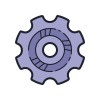Link to Publication: https://devmesh.intel.com/projects/breast-cancer-classification-using-neural-network
Breast cancer is a major health concern worldwide, and early detection is crucial for successful treatment. Machine learning can play a significant role in breast cancer prediction by analyzing patient data and identifying patterns that can help in the diagnosis. By leveraging machine learning algorithms, we can build predictive models that can analyze mammogram images and patient data to predict the likelihood of developing breast cancer. This can help doctors and medical professionals to diagnose the disease at an early stage and provide effective treatment. Our Github repository contains code for implementing such models and contributing to breast cancer prediction research.
The breast cancer classification project using neural network and deep learning is aimed at creating an accurate and efficient system for identifying and diagnosing breast cancer. The project utilizes deep learning algorithms to train a neural network on large datasets of mammograms and biopsy images, allowing it to recognize patterns and features that are indicative of cancerous cells. This system has the potential to greatly improve the accuracy and speed of breast cancer diagnosis, as well as reduce the workload of medical professionals. The project also has the potential to improve patient outcomes by enabling earlier detection of breast cancer and more targeted treatment plans. Overall, the breast cancer classification project is a promising application of cutting-edge technology in the field of medical imaging and diagnosis.
✅Train the model using Intel oneDAL and create a model using oneDNN to get better results and faster computation(Intel oneAPI Data Analytics Library (oneDAL, oneDNN))
- Sequential Neural Network --> 94.7 %
✅Building application using intel oneDAL:The Intel oneAPI Data Analytics Library (oneDAL) contributes to the acceleration of big data analysis by providing highly optimised algorithmic building blocks for all phases of data analytics (preprocessing, transformation, analysis, modelling, validation, and decision making) in batch, online, and distributed processing modes of computation.The library optimizes data ingestion along with algorithmic computation to increase throughput and scalability.
✅Understanding of the data: You would have learned how to preprocess and clean the data, as well as how to handle missing values and categorical variables. You may also have conducted exploratory data analysis to gain insights into the relationships between the variables.
✅Selection of appropriate algorithms: You would have learned how to select appropriate machine learning algorithms for the given problem. For example, logistic regression may be useful for binary classification problems, while decision trees may be better suited for multiclass problems.
✅Machine Learning: I likely learned about different machine learning algorithms and how they can be applied to predict cardiovascular disease and make recommendations for patients.
✅Data Analysis: I likely gained experience in collecting and analyzing large amounts of data, including historical data, to train our machine learning models.
✅Comparison of model performance: You would have learned how to compare the performance of different models using appropriate statistical tests or visualizations. This can help you choose the best model for the given problem.
✅Collaboration: Building a project like this likely required collaboration with a team of experts in various fields, such as medical science, machine learning, and data analysis, and I likely learned the importance of working together to achieve common goals.
These are just a few examples of the knowledge and skills that i likely gained while building this project. Overall, building a cancer classification application is a challenging and rewarding experience that requires technical expertise.







